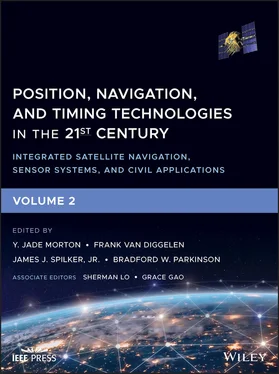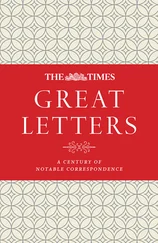82 82 S. Sen et al., “Avoiding multipath to revive inbuilding Wi‐Fi localization,” in MobiSys, 2013.
83 83 A.R. Golding, and N. Lesh, “Indoor navigation using a diverse set of cheap, wearable sensors,” ISWC ‘99: Proc. 3rd IEEE Int. Symp. Wearable Computers, San Francisco, CA, USA, IEEE Computer Society, 1999, p. 29.
84 84 A. Hub, J. Diepstraten, and T. Ertl, “Design and development of an indoor navigation and object identification system for the blind,” Proceedings of the 6th International ACM SIGACCESS Conference on Computers and Accessibility, Atlanta, GA, USA, 2004, pp. 147–152.
85 85 L. Ran, S. Helal, and S. Moore, “Drishti: An integrated indoor/outdoor blind navigation system and service,” PERCOM ‘04 Proc. Second IEEE International Conf. Pervasive Computing and Communications (PerCom’04), Orlando, FL, USA, 2004, pp. 23–30.
86 86 G. Retscher and M. Thienelt, “Navio—a navigation and guidance service for pedestrians,” Journal of Global Positioning Systems, Vol. 3, No. 1–2, 208–217, 2004.
87 87 A.R. Golding and N. Lesh, “Indoor navigation using a diverse set of cheap, wearable sensors,” in Wearable Computers, The Third International Symposium on, IEEE, pp. 29–36, 1999.
88 88 N. Ravi and L. Iftode, “Fiatlux: Fingerprinting rooms using light intensity.” In Pervasive Computing, in Adjunct Proceedings of the Fifth International Conference on, 2007.
89 89 A.R. Jimenez, F. Zampella, and F. Seco, “Light‐matching: A new signal of opportunity for pedestrian indoor navigation,” in Indoor Positioning and Indoor Navigation (IPIN), 2013 International Conference on, IEEE, 2013, pp. 1–10.
90 90 S.‐Y. Jung, C.‐K. Choi, S. Hu Heo, S. Ro Lee, and C.‐S. Park, “Received signal strength ratio based optical wireless indoor localization using light emitting diodes for illumination,” in Consumer Electronics (ICCE), 2013 IEEE, 2013.
91 91 W. Zhang and M. Kavehrad, “A 2D indoor localization system based on visible light LED,” in Photonics Society Summer Topical Meeting Series, IEEE, 2012, pp. 80–81.
92 92 M. Bilgi, M. Yuksel, and N. Pala, “3D optical wireless localization,” in GLOBECOM Workshops (GC Wkshps), IEEE, 2010, pp. 1062–1066.
93 93 P. Hu, L. Li, C. Peng, G. Shen, and F. Zhao, “Pharos: Enable physical analytics through visible light based indoor localization,” in Proceedings of the Twelfth ACM Workshop on Hot Topics in Networks, ACM, 2013, 5.
94 94 L. Li, P. Hu, C. Peng, G. Shen, and F. Zhao, Epsilon: A visible light based positioning system, in 11th USENIX Symposium on Networked Systems Design and Implementation (NSDI 14), USENIX Association, 2014, pp. 331–343.
95 95 Microsoft Kinect: http://www.xbox.com/de‐DE/kinect/
96 96 Sky‐Trax Inc., 2011, http://www.sky‐trax.com/
97 97 A. Mulloni, D. Wgner, D. Schmalstieg, and I. Barakonyi, “Indoor positioning and navigation with camera phones,” Pervasive Computing, IEEE, Vol. 8, pp. 22–31, 2009.
98 98 AICON 3D Systems: http://www.aicon.de
99 99 Hagisonic, “User’s Guide Localization System StarGazerTM for Intelligent Robots,” 2008, http://www.hagisonic.com/
100 100 S. Lee and J.B. Song, “Mobile Robot localization using infrared light reflecting landmarks,” Proceedings of the International Conference on Control, Automation and Systems (ICCAS’07), 2007, pp. 674–677.
101 101 M. Köhler, S. Patel, J. Summet, E. Stuntebeck, and G. Abowed, “TrackSense: Infrastructure free precise indoor positioning using projected patterns,” Pervasive Computing, LNCS, Vol. 4480, pp. 334–350, 2007.
102 102 R. Want, A. Hopper, V. Falcao, and J. Gibbons, “The Active Badge Location System,” ACM Transactions on Information Systems, Vol. 10, No. 1, January 1992, pp. 91–102.
103 103 L.M. Ni, Y. Liu, Y.C. Lau, and A.P. Patil, “LANDMARC: Indoor location sensing using active RFID,” Wireless Networks, Vol. 10, No. 6, pp. 701–710, November 2004.
104 104 J.J. Caffery and G.L. Stuber, “Overview of radiolocation in CDMA cellular system,” IEEE Communications Magazine, Vol. 36, No. 4, pp. 38–45, April 1998.
105 105 R. Harle, "A survey of indoor inertial positioning systems for pedestrians," in IEEE Communications Surveys & Tutorials, Vol. 15, No. 3, pp. 1281–1293, Third Quarter 2013.
106 106 H. WeinBerg, “AN‐602: Using the ADXL202 in pedometer and personal navigation applications,” Analog Devices, Tech. Rep., 2002.
107 107 C. Randell, C. Djiallis, and H. Muller, “Personal position measurement using dead reckoning,” in Proceedings of IEEE International Symposium on Wearable Computers (ISWC), 2003.
108 108 C. Wu, Z. Yang, Y. Liu, and W. Xi, “WILL: Wireless indoor localization without site survey,” IEEE Transactions on Parallel and Distributed Systems, Vol. 24, No. 4, 839–848, 2013a.
109 109 A.R. Jimenez, F. Seco, C. Prieto, and J. Guevara, “A comparison of pedestrian dead‐reckoning algorithms using a low‐cost MEMS IMU,” in Proceedings of IEEE International Symposium on Intelligent Signal Processing (WISP), 2009.
110 110 Z. Yang, C. Wu, and Y. Liu, “Locating in fingerprint space: Wireless indoor localization with little human intervention,” in Proceedings of ACM International Conference on Mobile Computing and Networking (MobiCom), 2012.
111 111 H. Wang, S. Sen, A. Elgohary, M. Farid, M. Youssef, and R. Roy Choudhury, “No need to war‐drive: Unsupervised indoor localization,” in Proceedings of ACM International Conference on Mobile Systems, Applications, and Services (MobiSys), 2012.
112 112 S. Sen, J. Lee, K.‐H. Kim, and P. Congdon, “Back to the basics: Avoiding multipath to revive inbuilding WiFi localization,” in Proceedings of ACM International Conference on Mobile Systems, Applications, and Services (MobiSys), 2013.
113 113 P. Goyal, V.J. Ribeiro, H. Saran, and A. Kumar, “Strap‐down Pedestrian Dead‐Reckoning system,” in 2011 International Conference on Indoor Positioning and Indoor Navigation, IEEE, September 2011, pp. 1–7.
114 114 X. Zhu, Q. Li, and G. Chen, “APT: Accurate outdoor pedestrian tracking with smartphones,” in Proceedings of IEEE International Conference on Computer Communications (INFOCOM), 2013.
115 115 J. Saarinen, J. Suomela, S. Heikkila, M. Elomaa, and A. Halme, “Personal navigation system,” 2004 IEEERSJ International Conference on Intelligent Robots and Systems, IROS IEEE Cat No04CH37566, 2004, pp. 212–217.
116 116 Q. Wang, X. Zhang, X. Chen, R. Chen, W. Chen, and Y. Chen, “A novel pedestrian dead reckoning algorithm using wearable EMG sensors to measure walking strides,” in 2010 Ubiquitous Positioning Indoor Navigation and Location Based Service, IEEE, October 2010, pp. 1–8.
117 117 R. Margaria and R. Margaria, Biomechanics and Energetics of Muscular Exercise, Clarendon Press, Oxford, 1976.
118 118 Q. Ladetto, “On foot navigation: Continuous step calibration using both complementary recursive prediction and adaptive Kalman filtering,” in Proceedings of ION GPS, 2000.
119 119 D. Gusenbauer, C. Isert, and J. Krosche, “Self‐contained indoor positioning on off‐the‐shelf mobile devices,” in Proceedings of International Conference on Indoor Positioning and Indoor Navigation (IPIN), 2010.
120 120 J.E.A. Bertram and A. Ruina, “Multiple walking speed–frequency relations are predicted by constrained optimization,” Elsevier Journal of Theoretical Biology, Vol. 209, No. 4, 445–453. 2001.
121 121 D.‐K. Cho, M. Mun, U. Lee, W.J. Kaiser, and M. Gerla, “AutoGait: A mobile platform that accurately estimates the distance walked,” in Proceedings of IEEE International Conference on Pervasive Computing and Communications (PerCom), 2010.
122 122 G. Shen, Z. Chen, P. Zhang, T. Moscibroda, and Y. Zhang, “Walkie‐Markie: Indoor pathway mapping made easy,” in Proceedings of USENIX Conference on Networked Systems Design and Implementation (NSDI), 2013.
Читать дальше











